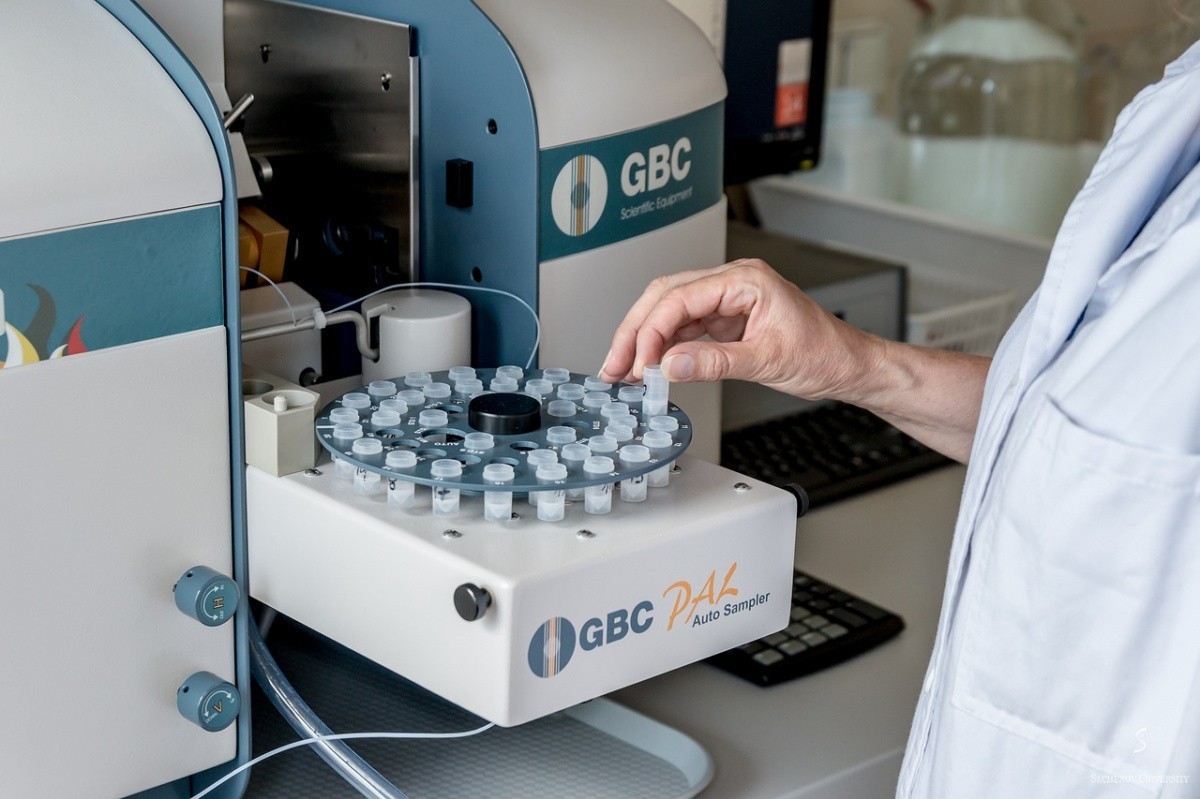-
About University
- Mission & Brand Strategy
- University Leadership
- Rector's Welcome
- History
- Regulatory Documents
- Contacts
- Staff
- International Recruitment
- Partners
Applicants- Why Sechenov University
- Degree Programmes in English
- Preparatory Courses
- Non-Degree Programmes
- Transfer from other Institutions
29.07.2020New saliva-based method to diagnose Sjogren’s syndrome
 Sechenov researchers rule out that a condition that affects many people may be diagnosed by a relatively simple saliva test. The conventional procedure involves a biopsy, which is painful and can lead to complications.
Sechenov researchers rule out that a condition that affects many people may be diagnosed by a relatively simple saliva test. The conventional procedure involves a biopsy, which is painful and can lead to complications.
Sechenov University dentists and their colleagues have analysed the composition of saliva in patients affected by Sjögren’s syndrome and ruled out it could be used for diagnostic purposes. The current procedure to diagnose the disease involves a biopsy of the salivary glands, which may be painful and cause adverse reactions, such as paraesthesia, infection, and bleeding. The findings that can potentially improve the diagnostics for many people have been published in Journal of Clinical Medicine.
Sjögren’s syndrome is an autoimmune disease, possibly the second most common after rheumatoid arthritis. The condition is associated with sialadenitis — inflammation of the glands — and affects both minor and major salivary glands. Xerostomia, or “dry mouth”, and dry eyes are the typical manifestations of Sjögren’s syndrome. The disease is characterised by focal lymphoplasmacytic epithelial gland infiltration and polyclonal B-cell activation, as well as formation of polyclonal and monoclonal immunoglobulins — predominantly IgG and IgM.
Sjögren’s syndrome is usually diagnosed by a biopsy of the salivary glands, but this approach is invasive and may lead to infection and other complications. However, it is known that saliva composition changes in patients with Sjögren’s syndrome, meaning that saliva biomarkers could be used for non-invasive analysis. Saliva collection is simple and safe, and its protein composition is already studied quite well, but the cellular composition has not been investigated in much detail. The authors of the research paper decided to fill this gap and detect lymphocyte phenotypes in the saliva.
The study included 40 patients, aged 19–60, with parenchymal sialadenitis associated with Sjögren’s syndrome. Each patient received a blood test, Schirmer’s test (to determine if the eyes produce enough tears), vital dye staining of the eye surface, sialometry (the measurement of saliva flow), and morphological analysis of the biopsy specimen of the small salivary gland. The control group consisted of 20 healthy volunteers, aged 19–60, and underwent identical treatment. Pure parotid saliva was collected from the participants and analysed by multicolour flow cytometry to determine the content of different lymphocyte types — T-cells, T-helpers, T-cytotoxic cells, natural killer cells, and B-cells.
The patients with Sjögren’s syndrome exhibited a slower salivary secretion rate than the healthy volunteers. Also, the cytological assessment of the salivary sediment revealed lymphocytes in 80% of the patients, while these cells were absent in the control group’s samples. It agrees with the idea that pure parotid saliva does not contain lymphocytes.
Most importantly, epithelial cells (97.5%), erythrocytes (7.5%), and granulocytes (37.5%) were detected in the patients, whereas only epithelial cells (55%) and granulocytes (5%) were found in healthy volunteers. In most patients with Sjögren’s syndrome, lymphocytes reached up to 10% of all detected cells. This result supports the idea that the diagnosis may be based on the cellular composition of the saliva because lymphocytes are associated with inflammation that is typical for Sjögren’s syndrome.
The disease progression includes multiple steps, such as the formation of lymphoid infiltrate, sequential development of lymphoid sialadenitis, and a diffuse lymphocytic sialadenitis, finally leading to the replacement of the glandular tissue. Thus, various types of lymphocytes may be associated with different stages of Sjögren’s syndrome.
Anna Turkina, of the Department of Therapeutic Dentistry, Sechenov University, is the corresponding author of the study. She says: “Researchers currently focus on different sources of reliable biomarkers — apart from blood — which could open up new opportunities in the diagnosis and prognosis of the disease. Overall, the profile of the pathological changes in the parotid secretion revealed in the study by lymphocyte immunophenotyping corresponds to the previously published results of immunohistochemical studies of biopsy specimens. It suggests a significant potential of saliva analysis for diagnosis of Sjögren’s syndrome, thus reducing the number of biopsies in patients”.
The study authors hypothesise that the inflammatory process in the salivary glands continues despite the treatment, and the T-cells located around the striated ducts can ultimately penetrate the duct lumen. Cytological biomarkers could be used for evaluation of Sjögren’s syndrome progression, but this approach requires further investigation — in a larger cohort.
The study was performed by the Department of Therapeutic Dentistry (Sechenov University) together with colleagues from the Nasonova Research Institute of Rheumatology (Moscow, Russia) and the Department of Neuroscience, Reproductive and Odontostomatological Sciences, Oral Medicine Unit, Federico II University of Naples (Naples, Italy).
Read more: Selifanova E, Beketova T, Spagnuolo G, Leuci S, Turkina A. A Novel Proposal of Salivary Lymphocyte Detection and Phenotyping in Patients Affected by Sjogren’s Syndrome. J. Clin. Med. (2020).
Photo credit: Michal Jarmoluk, Pixabay 2815639
Embed on website
New saliva-based method to diagnose Sjogren’s syndrome
Sechenov researchers rule out that a condition that affects many people may be diagnosed by a relatively simple saliva test. The conventional procedure involves a biopsy, which is painful and can lead to complications.
Sechenov University dentists and their colleagues have analysed the composition of saliva in patients affected by Sjögren’s syndrome and ruled out it could be used for diagnostic purposes. The current procedure to diagnose the disease involves a biopsy of the salivary glands, which may be painful and cause adverse reactions, such as paraesthesia, infection, and bleeding. The findings that can potentially improve the diagnostics for many people have been published in Journal of Clinical Medicine.
Sjögren’s syndrome is an autoimmune disease, possibly the second most common after rheumatoid arthritis. The condition is associated with sialadenitis — inflammation of the glands — and affects both minor and major salivary glands. Xerostomia, or “dry mouth”, and dry eyes are the typical manifestations of Sjögren’s syndrome. The disease is characterised by focal lymphoplasmacytic epithelial gland infiltration and polyclonal B-cell activation, as well as formation of polyclonal and monoclonal immunoglobulins — predominantly IgG and IgM.
Sjögren’s syndrome is usually diagnosed by a biopsy of the salivary glands, but this approach is invasive and may lead to infection and other complications. However, it is known that saliva composition changes in patients with Sjögren’s syndrome, meaning that saliva biomarkers could be used for non-invasive analysis. Saliva collection is simple and safe, and its protein composition is already studied quite well, but the cellular composition has not been investigated in much detail. The authors of the research paper decided to fill this gap and detect lymphocyte phenotypes in the saliva.
The study included 40 patients, aged 19–60, with parenchymal sialadenitis associated with Sjögren’s syndrome. Each patient received a blood test, Schirmer’s test (to determine if the eyes produce enough tears), vital dye staining of the eye surface, sialometry (the measurement of saliva flow), and morphological analysis of the biopsy specimen of the small salivary gland. The control group consisted of 20 healthy volunteers, aged 19–60, and underwent identical treatment. Pure parotid saliva was collected from the participants and analysed by multicolour flow cytometry to determine the content of different lymphocyte types — T-cells, T-helpers, T-cytotoxic cells, natural killer cells, and B-cells.
The patients with Sjögren’s syndrome exhibited a slower salivary secretion rate than the healthy volunteers. Also, the cytological assessment of the salivary sediment revealed lymphocytes in 80% of the patients, while these cells were absent in the control group’s samples. It agrees with the idea that pure parotid saliva does not contain lymphocytes.
Most importantly, epithelial cells (97.5%), erythrocytes (7.5%), and granulocytes (37.5%) were detected in the patients, whereas only epithelial cells (55%) and granulocytes (5%) were found in healthy volunteers. In most patients with Sjögren’s syndrome, lymphocytes reached up to 10% of all detected cells. This result supports the idea that the diagnosis may be based on the cellular composition of the saliva because lymphocytes are associated with inflammation that is typical for Sjögren’s syndrome.
The disease progression includes multiple steps, such as the formation of lymphoid infiltrate, sequential development of lymphoid sialadenitis, and a diffuse lymphocytic sialadenitis, finally leading to the replacement of the glandular tissue. Thus, various types of lymphocytes may be associated with different stages of Sjögren’s syndrome.
Anna Turkina, of the Department of Therapeutic Dentistry, Sechenov University, is the corresponding author of the study. She says: “Researchers currently focus on different sources of reliable biomarkers — apart from blood — which could open up new opportunities in the diagnosis and prognosis of the disease. Overall, the profile of the pathological changes in the parotid secretion revealed in the study by lymphocyte immunophenotyping corresponds to the previously published results of immunohistochemical studies of biopsy specimens. It suggests a significant potential of saliva analysis for diagnosis of Sjögren’s syndrome, thus reducing the number of biopsies in patients”.
The study authors hypothesise that the inflammatory process in the salivary glands continues despite the treatment, and the T-cells located around the striated ducts can ultimately penetrate the duct lumen. Cytological biomarkers could be used for evaluation of Sjögren’s syndrome progression, but this approach requires further investigation — in a larger cohort.
The study was performed by the Department of Therapeutic Dentistry (Sechenov University) together with colleagues from the Nasonova Research Institute of Rheumatology (Moscow, Russia) and the Department of Neuroscience, Reproductive and Odontostomatological Sciences, Oral Medicine Unit, Federico II University of Naples (Naples, Italy).
Read more: Selifanova E, Beketova T, Spagnuolo G, Leuci S, Turkina A. A Novel Proposal of Salivary Lymphocyte Detection and Phenotyping in Patients Affected by Sjogren’s Syndrome. J. Clin. Med. (2020).
Photo credit: Michal Jarmoluk, Pixabay 2815639



